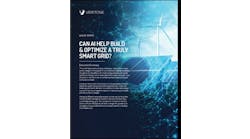Community microgrid projects yield numerous benefits. Some keep police, hospitals, water plants and other critical services running during power outages. Others may serve remote outposts with no other source of reliable electricity. Community microgrids have even saved lives.
Because of their impact, community microgrids are often studied. But the research generally focuses on technical and engineering issues.
Mahmood Muttaqee, a doctoral candidate of public policy at Oregon State University (OSU), has decided to take another approach.
He and his team are investigating what the community thinks — the local concerns and perceptions that can prevent villages and towns from giving community microgrids the green light. The team is interviewing local officials, microgrid developers and other stakeholders and surveying media and academic reports.
So what do they find stands in the way of community microgrids? Muttaqee cited limited community engagement, the use of nonrenewable generation technologies, financing challenges and the lack of metrics for valuing microgrid resilience.
He and his associates have studied 12 community microgrids so far. The work, which is not yet complete, won funding from the Alfred P. Sloan Foundation.
“We believe that many studies about community microgrids are based on technology and engineering, but not many explore the community side. The community is becoming more and more relevant as we see more proposals for residential and community microgrids,” he said. “We selected a range of microgrid development proposals around the US to better understand how communities assess, perceive and respond to these proposals.”
What communities don’t like
Muttaqee found that there’s not much interest from the community unless a controversy arises. Microgrid projects that propose using fossil fuels tend to generate controversy. One such project in New York was called off following community objection.
Community microgrids that benefit homeowners also elicited more interest than those that served public buildings, Muttaqee said.
Financing was also an important issue. A second microgrid project studied by the OSU team was shelved when the financing fell through. Some of the financing depended on grants that didn’t materialize.
Concerns about health also become deal breakers, particularly in marginalized communities if the microgrid incorporates fossil fuels.
“In one case, the microgrid power was to be generated from a community nearby surrounded by residences,” said Muttaqee. Power would have gone to community buildings a few miles away. The homeowners didn’t want the microgrid so close to their homes. The community was very diverse, and people felt it was unjust for them to bear the brunt of any pollution from a fossil fuel generator.
Often, however, marginalized communities want microgrids when they lower pollution, spur job growth and provide resilience during outages.
As the OSU researchers see it, a lack of resilience metrics also obstructs projects. Such a metric can boost the financial attractiveness of projects, said Muttaqee.
What to do to win support
Recognizing this and other challenges, the OSU team made four recommendations. First, they suggested that projects rely on renewable energy as much as possible, given that community members tend to oppose projects based on fossil fuels.
Second, they recommended that microgrid developers engage the community as early as possible. Successful project developers meet with local officials, explain their projects at town hall meetings and local festivals, hold online informational meetings and offer site visits to stakeholders.
“These things help explain emerging technologies coming to communities,” said Muttaqee.
Third, microgrid developers should stress the resilience and reliability benefits of their projects. How to quantify this has become an important topic in the microgrid industry. In California, for example, a working group is exploring how to quantify the value of electric resilience as part of a larger effort by the state public utilities commission to implement a law (SB 1339) to support microgrid development.
And finally, efforts should be made to ensure community microgrid projects are commercially viable without grant support, said Muttaqee.
One option that helps address this issue, he noted, is energy-as-a-service contracts that spare communities from investing in a microgrid. Instead, it is owned and operated by a third party and the community pays only for the service.
Tariffs as drivers
In addition to the issues Muttaqee raised, community microgrids can be aided by tariffs that are friendly to microgrids. In California, Pacific Gas & Electric (PG&E) has said it sees more community microgrid opportunities in its service territory as a result of the approval by California regulators of an update to a utility tariff.
Muttaqee hopes his case studies will inform developers, policymakers and academics about community reaction and perceptions to microgrids. He hopes that when the case studies become available, they’ll become an important tool to help residential neighborhoods and communities address concerns, advance more community microgrids and help neighborhoods, towns and cities benefit from cleaner, lower cost and resilient power.
Track news about community microgrids. Subscribe to the free Microgrid Knowledge Newsletter.








